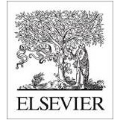Neuro-symbolic AI attempts to integrate neural and symbolic architectures in a manner that addresses strengths and weaknesses of each, in a complementary fashion, in order to support robust strong AI capable of reasoning, learning, and cognitive modeling. In this paper we consider the intensional First Order Logic (IFOL) as a symbolic architecture of modern robots, able to use natural languages to communicate with humans and to reason about their own knowledge with self-reference and abstraction language property. We intend to obtain the grounding of robot's language by experience of how it uses its neuronal architectures and hence by associating this experience with the mining (sense) of non-defined language concepts (particulars/individuals and universals) in PRP (Properties/Relations/Propositions) theory of IFOL. We consider the robot's four-levels knowledge structure: The syntax level of particular natural language (Italian, French, etc..), two universal language levels: its semantic logic structure (based on virtual predicates of FOL and logic connectives), and its corresponding conceptual PRP structure level which universally represents the composite mining of FOL formulae grounded on the last robot's neuro system level.
翻译:暂无翻译



